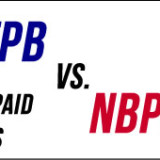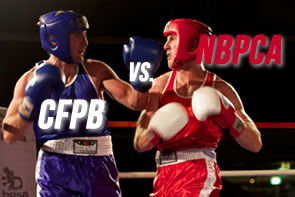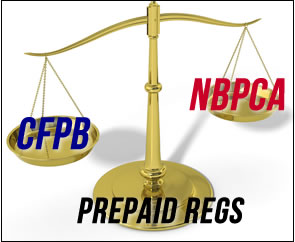If you have more student loan debt than you can handle, or if you’ve been paying and paying (and paying) and can’t make headway, chances are you’ve wondered about student loan forgiveness. As you look into your options, keep in mind that everything you read (or hear — even from your student loan servicer) may not be accurate. We asked experts who work with borrowers all the time to share the most common myths they hear about student loan forgiveness. Here are their top picks.
Myth: You have to pay someone to get loan forgiveness help.
“There are lots of online scams that charge borrowers for things that are available for free from the government. The truth is you don’t have to pay anyone,” says Pauline Abernathy, vice president The Institute for College Access and Success. Borrowers can use the free tools offered by the Department of Education — starting with the National Student Loan Data System. If more help is needed, they may want to seek advice from a reputable counseling agency or consumer protection attorney who is well-versed in student loan law.
Myth: Student loans can’t be wiped out in bankruptcy.
“The bankruptcy laws require you to show that being held responsible for the student loans will amount to what’s called an ‘undue hardship.’ Though this standard can be difficult to meet, it’s not impossible,” says Jay S. Fleischman, a lawyer who concentrates in the fields of student loan resolution and consumer bankruptcy. He goes on to explain that if you attempt to discharge your student loans in bankruptcy, you’ll have the advantage of dealing with an attorney, rather than a debt collector. “Those attorneys often have the ability to resolve payment disputes more readily than non-lawyer collectors,” he says. “Many people who seek a discharge of their student loans in bankruptcy end up settling on a reduced balance or affordable payment plan, which may accomplish your goal of bringing the payments in line with your financial abilities.”
Myth: Only Corinthian students get relief from debts involving school fraud.
Students may be eligible for cancellation of federal loans from schools that committed fraud or broke state laws. It’s called a “defense to repayment,” and the Department of Education is working on a process to make it easier for borrowers who attended other schools to apply for this relief. More information is available from the Department of Education. “The Education Department is developing a comprehensive system to assist students defrauded by any school and to hold schools accountable for their actions that result in loan discharges,” said Abernathy. Borrowers who have been victims of fraud by their schools may also want to look into state tuition recovery funds. StudentLoanBorrowerAssistance.org maintains a list of state tuition recovery funds.
Myth: Forgiveness applies only to federal loans.
While it’s true that private loan forgiveness programs are few and far between, some borrowers are able to settle private student loans for less than the full balance says Steve Rhode, founder of GetOutofDebt.org and a Credit.com contributor. “Settlement offers I’ve seen have been in the 45% to 50% range with up to two years to pay,” he says on his site.
Myth: Only consolidated loans can take advantage of public service loan forgiveness (PSLF).
Not true, says Joshua Cohen, aka The Student Loan Lawyer. “As long as all of your loans are Direct Loans, they qualify.”
Myth: Payments don’t count for PSLF until an employer certification form is completed.
Or until it is transferred to FedLoan (a student loan servicer), or until you’ve enrolled in the program etc. … “Where is this stuff coming from?!” Cohen asks. The employment certification form is encouraged, but not required. And the reality is that qualifying payments made on Direct Loans while working for a qualifying employer made after Oct. 1, 2007, currently count toward the 120 payments required under this program.
Myth: If you are a teacher, you automatically qualify for PSLF.
“There are specific requirements and if you work for a for-profit school you may be out of luck,” says Rhode. (Here’s more information on teacher loan forgiveness.) Similarly, those working in other professions that may be eligible but can run into some hurdles when trying to qualify. Nevertheless, is important for borrowers who are hoping to take advantage of PSLF to understand the requirements of the programs for which they may be eligible, so they don’t wind up missing out on an important benefit.
Myth: Student loan forgiveness is for everyone.
“In reality, it really only provides relief to those with very large debts and/or low incomes,” says Andrew Josuweit, founder of StudentLoanHero.com where this issue is explored in detail.
It makes sense that borrowers who are able to afford their payments aren’t going to be able to take advantage of the most popular forgiveness options, many of which require a certain number of payments under an income-driven plan. A recent report from Equifax found that the income group most at risk of defaulting on their student loans were those earning less than $ 30,000. “This rings true across all age groups, with those earning less than $ 30,000 suffering from triple or even quadruple the delinquency rates of their higher-earning peers within the same age group,” say the authors of the report, Dann Adams and Naser Hamdi.
But even high earners may run into a situation where they lose their income, and for anyone who isn’t working, even small debts can become unaffordable. Additionally, there are programs for lawyers, doctors, nurses and other higher-earning professionals, too. No one should automatically assume they aren’t eligible. (And don’t always rely on servicers to provide correct information. Sometimes they don’t.)
Myth: Parents are out of luck.
While it’s true parents with Parent PLUS loans aren’t eligible for Income-Based Repayment (IBR), they may be eligible for Income-Contingent Repayment (ICR), and that’s a “qualifying payment plan for PSLF,” Cohen points out.
Myth: Miss a payment or change jobs, and you start over.
If you miss a payment under one of these programs, “you just delayed it by a month for the missed payment, but you don’t start over,” says Cohen. However, if you were making payments under IBR and then consolidated you “ended the old loan and created a new loan. You start from Day One,” he notes.
Myth: I don’t have to worry about taxes on forgiven loan. (Or the reverse: Canceled student loans mean a tax bill.)
The truth is, it depends. Certain types of student loans canceled under PSLF are not taxable, but student loan debt discharged due to Total and Permanent Disability may be, unless you qualify for an exclusion. And currently, balances forgiven after completing an income-driven repayment plan are not tax-exempt. We’ve heard from borrowers who were shocked to learn that they owed large tax bill after they became disabled and were able to get their remaining balances canceled. Others were relieved to discover they qualified for the insolvency exclusion and wouldn’t have a tax bill to worry about. (Here’s a primer on taxes after student loan cancellation.)
Student loans can trap borrowers in debt for decades, and can make it difficult to buy a home or a car. If a student falls behind on payments, those late payments can ruin their credit scores for years to come. Even if loans are paid on time, debt can affect your credit scores. The programs today aren’t perfect and they can’t help everyone, but they can provide immediate relief for some. So borrowers will want to make sure they fully explore all their options for student loan repayment and forgiveness programs in order to take advantage of the programs available to them. It’s also wise to review your credit reports and scores (you can check two of your credit scores for free on Credit.com) to find out how your loans affect them.
Related Articles
- The Best Student Credit Cards in America
- What’s a Good Credit Score?
- How to Get a Credit Card With Bad Credit
This article originally appeared on Credit.com.
This article by Gerri Detweiler was distributed by the Personal Finance Syndication Network.
Personal Finance Syndication Network


 Since June, we have drastically changed our lives — in many ways. Getting our financial life in order is one big way we are changing everything. It feels great. Paying off the first (credit) card was amazing,” he said.
Since June, we have drastically changed our lives — in many ways. Getting our financial life in order is one big way we are changing everything. It feels great. Paying off the first (credit) card was amazing,” he said.






